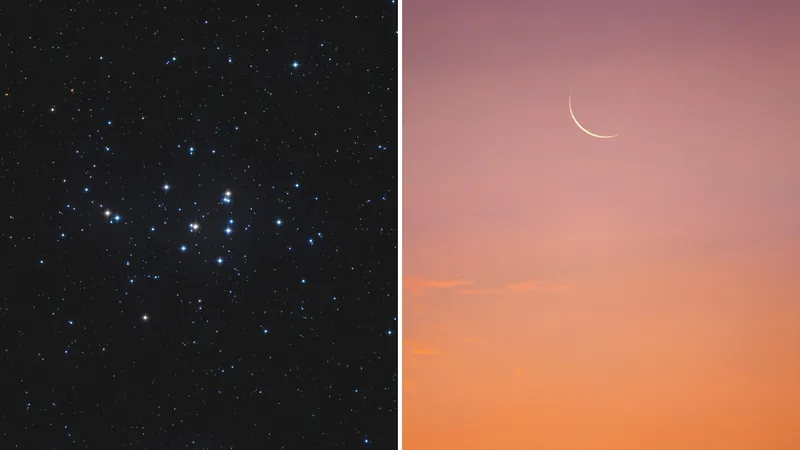
Monthly Solar Eclipses? This Small Satellite Could Make It Happen!
2025-07-11
Author: Jacques
A Game-Changer for Solar Studies
Remember the solar eclipse in the UK back in 1999? Many traveled far to witness the fleeting glory, only to be greeted by clouds. Fast forward to today, a groundbreaking mission is in the works that could allow us to experience a total solar eclipse every month—yes, you read that right! Imagine soaking in the awe of an eclipse lasting up to 48 minutes instead of the usual couple of minutes. This ambitious project, called the Moon Enabled Sun Occultation Mission (MESOM), aims to revolutionize our understanding of the Sun by artificially mimicking solar eclipses in space.
How MESOM Works: A Revolutionary Orbit!
Planned by a UK-led team, MESOM involves positioning a small satellite in a strategic orbit that aligns it with the Moon’s shadow roughly every 29.6 days. This innovative approach allows scientists to explore the Sun’s corona—its outer atmosphere—in astonishing detail, gathering data comparable to 80 Earth-based eclipses within just two years!
The corona, a mysterious and ethereal layer, is only visible during total solar eclipses and contains crucial insights into solar phenomena. It stretches millions of kilometers into space, yet on Earth, we are limited to rare glimpses that often require extensive travel. Understanding this region is essential for predicting space weather that can impact satellite operations and communication systems on Earth.
Beyond Waiting: The Future of Solar Observations
MESOM is here to change the eclipse game! The satellite won’t just wait for rare natural events or rely on massive equipment. Instead, it will glide through the Moon's shadow, experiencing artificial eclipses lasting up to 48 minutes—ten times the duration of typical observations from Earth. This extended viewing will enable measurements that were previously impossible.
High-Tech Instruments for Revolutionary Research
The satellite will be equipped with advanced technology: a high-resolution coronal imager, a corona mass spectrometer to analyze plasma composition, and a spectropolarimeter for studying the Sun's magnetic field, including sunspots and solar flares. This powerful combination of instruments creates a golden opportunity for unprecedented solar research.
The Awaited Approval and Future Impacts
The research team, which includes experts from the Mullard Space Science Laboratory, Aberystwyth University, and the Surrey Space Centre, is eagerly awaiting a response from the European Space Agency about their proposal. If approved, MESOM could operate for two years, ushering in an era of continual observation of the Sun’s behavior.
Transforming Solar Science!
MESOM represents a creative solution to longstanding challenges in solar science. Rather than investing in colossal, expensive instruments or waiting for rare cosmic coincidences, this mission cleverly utilizes the Moon as a natural shield against sunlight precisely when needed. If successful, MESOM could shift solar research from sporadic events to systematic and continuous study, providing invaluable insights into our star and safeguarding our technology-driven society from its unpredictable and violent outbursts.









 Brasil (PT)
Brasil (PT)
 Canada (EN)
Canada (EN)
 Chile (ES)
Chile (ES)
 Česko (CS)
Česko (CS)
 대한민국 (KO)
대한민국 (KO)
 España (ES)
España (ES)
 France (FR)
France (FR)
 Hong Kong (EN)
Hong Kong (EN)
 Italia (IT)
Italia (IT)
 日本 (JA)
日本 (JA)
 Magyarország (HU)
Magyarország (HU)
 Norge (NO)
Norge (NO)
 Polska (PL)
Polska (PL)
 Schweiz (DE)
Schweiz (DE)
 Singapore (EN)
Singapore (EN)
 Sverige (SV)
Sverige (SV)
 Suomi (FI)
Suomi (FI)
 Türkiye (TR)
Türkiye (TR)
 الإمارات العربية المتحدة (AR)
الإمارات العربية المتحدة (AR)